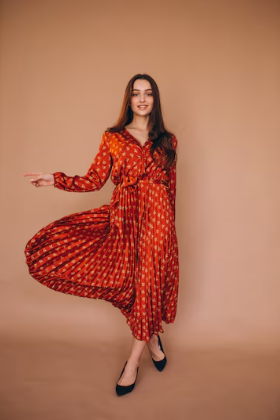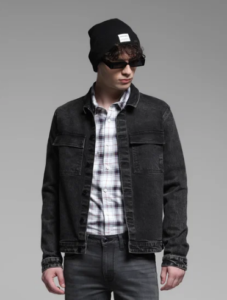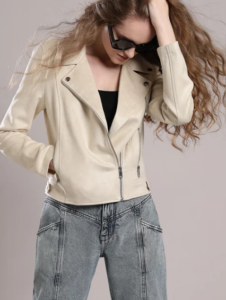In the era of environmental awareness and conscious consumerism, sustainable fashion has emerged as a powerful movement reshaping the industry towards a greener and more ethical future. “Eco-Chic: Sustainable Fashion for a Greener Future” delves into the principles, innovations, and impact of sustainable fashion, showcasing how style and sustainability can coexist harmoniously to create a more environmentally friendly and socially responsible fashion landscape.
The Rise of Sustainable Fashion
Sustainable fashion is a response to the environmental and social challenges posed by the traditional fashion industry, including issues like pollution, waste, unethical labor practices, and overconsumption. It emphasizes transparency, ethical sourcing, eco-friendly materials, and responsible production methods to minimize negative impacts on the planet and promote social equity throughout the supply chain.
Ethical Sourcing and Fair Trade
At the heart of sustainable fashion is ethical sourcing, which involves ensuring fair wages, safe working conditions, and respectful treatment of workers in the garment industry. Brands that prioritize fair trade partnerships and ethical labor practices contribute to a more equitable and humane fashion ecosystem, empowering workers and supporting communities in developing countries where many clothing items are produced.
Eco-Friendly Materials
A key pillar of sustainable fashion is the use of eco-friendly materials that minimize environmental impact throughout their lifecycle. This includes organic cotton, hemp, linen, bamboo, and recycled fibers like polyester made from plastic bottles. These materials require less water, energy, and chemicals to produce compared to conventional fabrics, reducing pollution and greenhouse gas emissions in the process.
Circular Economy and Upcycling
The concept of a circular economy is central to sustainable fashion, promoting resource efficiency and waste reduction. Brands are embracing upcycling, where discarded materials or clothing items are transformed into new products, reducing waste and extending the lifespan of materials. Upcycling not only minimizes landfill waste but also encourages creativity and innovation in design.
Slow Fashion Movement
In contrast to fast fashion’s rapid turnover of trends and constant production of disposable clothing, the slow fashion movement advocates for quality over quantity, timeless designs, and mindful consumption. Slow fashion encourages consumers to invest in durable, versatile pieces that withstand trends and last longer, reducing the need for frequent purchases and the resulting environmental footprint.
Transparency and Traceability
Transparency is a core value of sustainable fashion, with brands openly sharing information about their supply chain, production processes, and environmental impact. Traceability ensures accountability and allows consumers to make informed choices based on ethical and sustainability criteria. Certifications like Fair Trade, GOTS (Global Organic Textile Standard), and OEKO-TEX® provide assurance of sustainable and ethical practices.
Innovative Design and Technology
Sustainable fashion embraces innovation and technology to create eco-friendly alternatives and solutions. This includes advancements in fabric dyeing methods to reduce water usage and pollution, the development of biodegradable textiles, and the use of 3D printing for customized, on-demand production. Designers are also exploring digital fashion experiences and virtual fittings to minimize physical waste and optimize resources.
Collaborative Initiatives and Partnerships
Collaboration is key to driving change in sustainable fashion, with brands, organizations, governments, and consumers coming together to promote sustainability and advocate for positive impact. Collaborative initiatives include sustainable fashion weeks, industry alliances for responsible sourcing, and partnerships with NGOs and advocacy groups to address social and environmental challenges in the fashion industry.
Consumer Education and Empowerment
Educating consumers about sustainable fashion practices and empowering them to make conscious choices is essential for driving meaningful change. Initiatives such as eco-fashion campaigns, workshops on sustainable styling, and transparent labeling help consumers understand the impact of their fashion choices and encourage them to support ethical and eco-friendly brands.
Fashion Activism and Advocacy
Fashion activism plays a vital role in advocating for sustainability, ethical practices, and social justice within the industry. Activists, influencers, and organizations use their platforms to raise awareness, challenge harmful practices, and push for systemic change. From promoting sustainable alternatives to calling out greenwashing and advocating for policy reforms, fashion activism drives progress towards a greener and fairer fashion future.
Conclusion: Fashioning a Sustainable Future
“Eco-Chic: Sustainable Fashion for a Greener Future” illustrates the transformative power of sustainable fashion in addressing environmental and social challenges while promoting innovation, creativity, and conscious consumption. By embracing ethical sourcing, eco-friendly materials, circular economy principles, and collaborative efforts, sustainable fashion paves the way for a more resilient, inclusive, and environmentally sustainable fashion industry. As consumers increasingly prioritize sustainability in their fashion choices, eco-chic becomes not just a trend but a fundamental shift towards a greener and brighter future for fashion and the planet.














+ There are no comments
Add yours